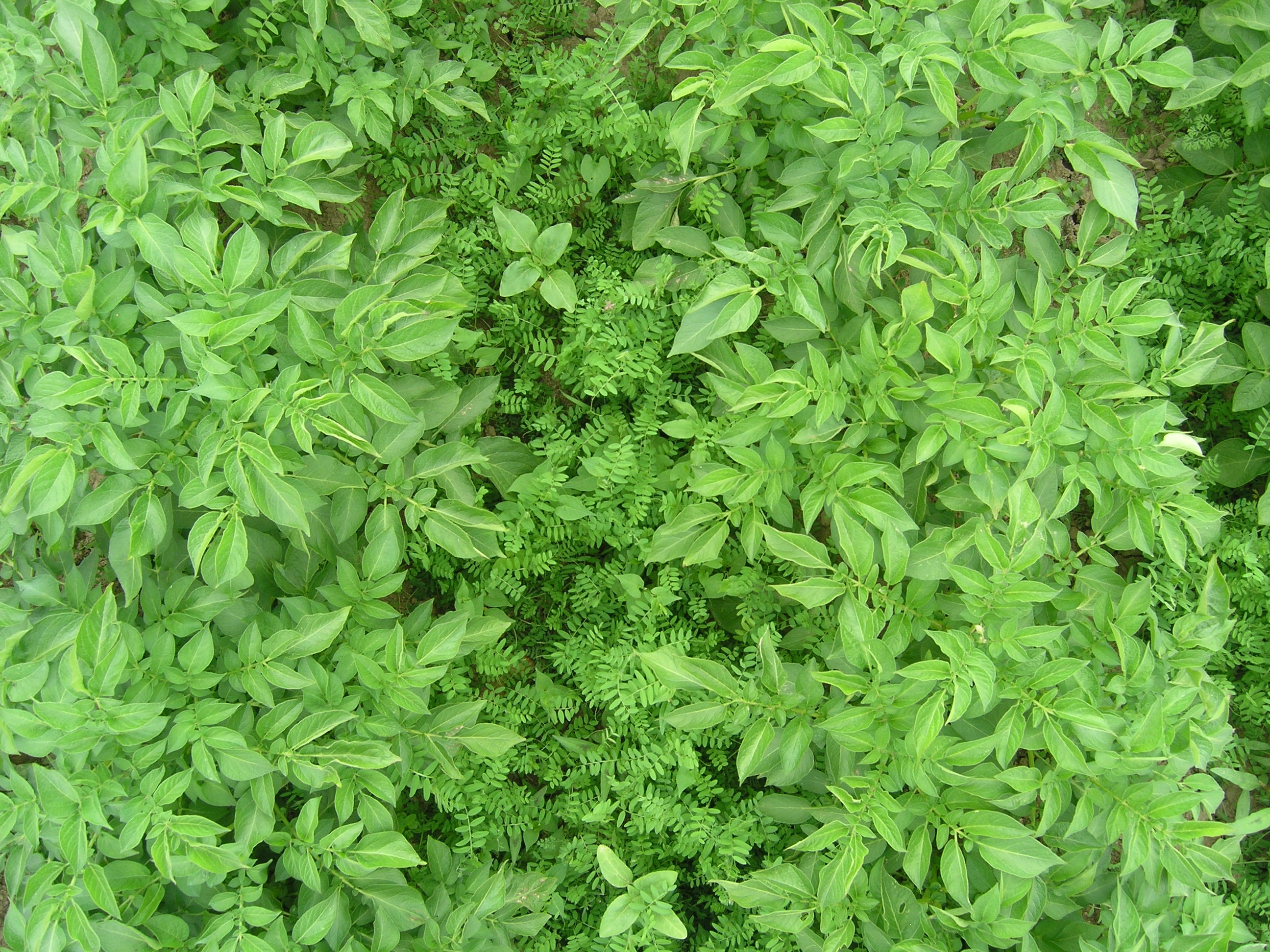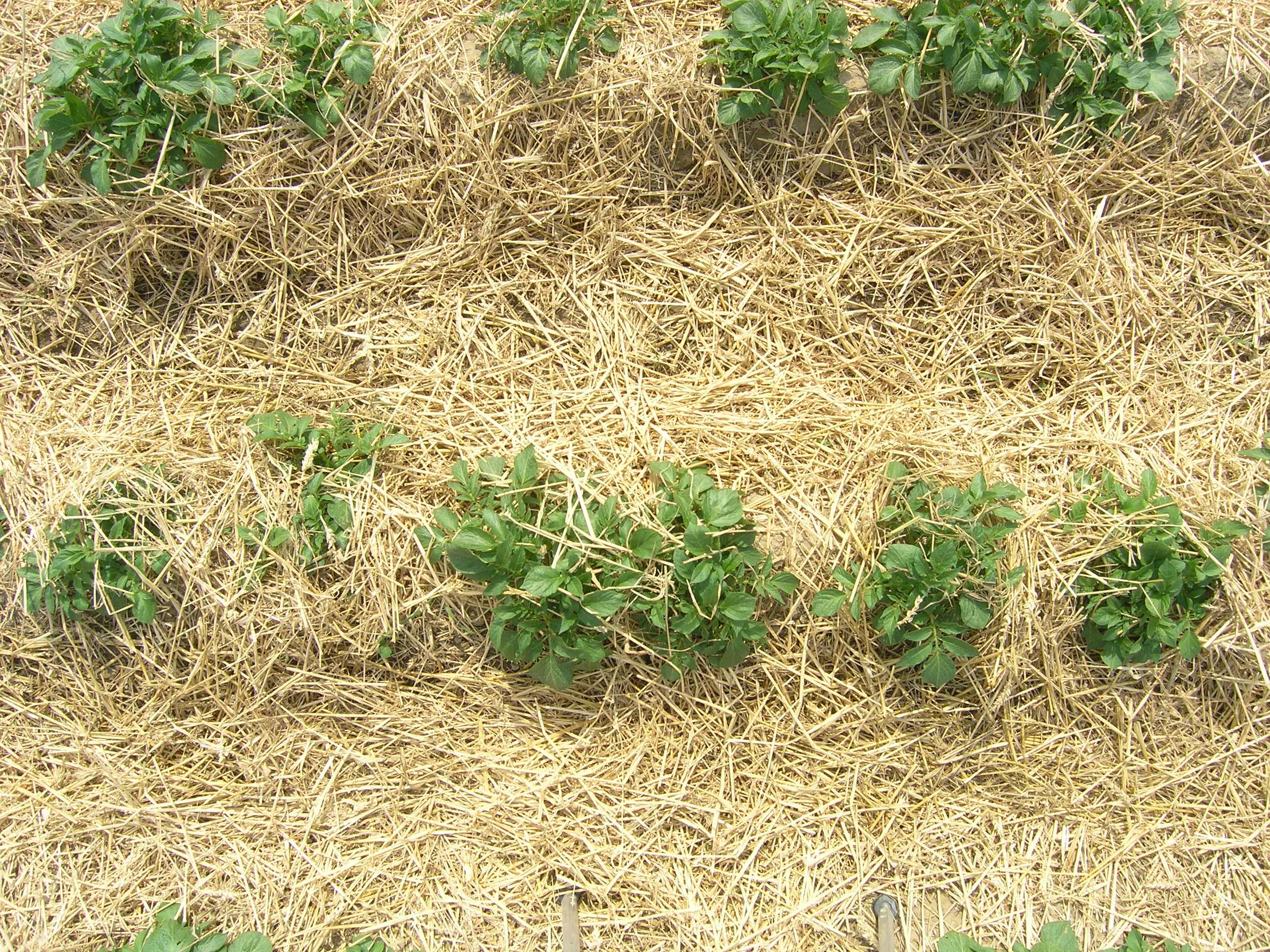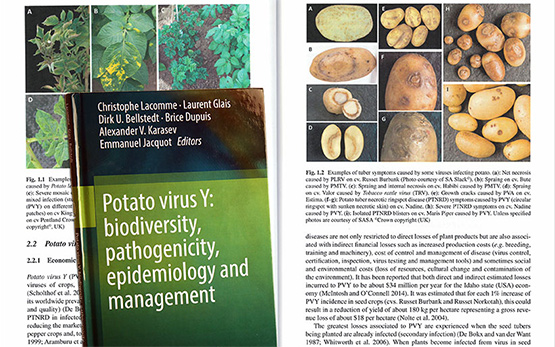This article appears in the November 2018 issue of Potato Grower.
Transmited by aphids, potato virus Y (PVY) causes more problems in seed potato production than any other virus. The virus causes highly variable crop losses, depending on the infection rate in the batch and the susceptibility of the variety in question.
Several control methods exist for limiting the spread of PVY, with insecticides and mineral oils being the most widespread. Alternative methods include innovative control strategies such as the use of natural defense stimulators and intercropping, as well as the combination of straw mulching and oil spraying.
The most effective control measure that is commonly practiced, of course, is the cultivation of varieties that are less susceptible or resistant to this virus. Producers, however, are not always able to choose the variety they cultivate. If susceptible varieties are grown, certain cultural measures can be taken to limit the risk of infection, such as choosing healthy plants, planting far away from sources of infection, and rogueing of the diseased plants in the field. The effectiveness of these measures is limited, though, and it is essential to take direct action against the spread of the virus.
In recent years, studies have been undertaken to determine the efficacy of alternative methods for controlling PVY. They include :
Elicitors
Numerous products are offered as natural plant defense stimulators, otherwise known as elicitors. The Swiss research station Agroscope tested the efficacy of one of these elicitors—acibenzolar-S-methyl (Bion from Syngenta)—against the spread of PVY. The product was field-trialed for two years and demonstrated an average efficacy of 10 percent, as opposed to the 14 percent efficacy of the insecticide tested in the same trial (?-Cyhalothrin, Karate from Syngenta). However, there are other elicitors on the market with modes of action that differ from that of acibenzolar-S-methyl and which it would be worthwhile testing against PVY.
 Crop Borders & Ground Cover
Crop Borders & Ground Cover
In North America, crop borders are frequently used to control the spread of PVY. This approach involves surrounding the main crop with a wide border of a plant or mixture of plants that are not susceptible to PVY, thereby creating a natural barrier to penetration by the aphids that transmit the virus. The non-host border plants cause aphids to shed their virus load after several test bores into them. The efficacy of crop borders is highly variable, ranging between 20 and 60 percent in trials.
Theoretically, the way in which crop borders work (i.e., as aphid barriers and virus traps) ought also to apply for intercropping, which is why Agroscope decided to test intercropping with oats and with hairy vetch as new methods for controlling PVY. Results over the two years of the trial were promising, with an average efficacy of 33 and 34 percent for the vetch and oats, respectively. However, the associated crops were in competition with potato plants for nutrients and water, which led to significant harvest losses (11 and 13 percent). Despite this, neither of the two associated ground covers caused any significant problems during harvest.
Intercropping is probably the least expensive technique for controlling PVY. Estimates put the cost of sowing hairy vetch as scarcely higher than that of a one-off mineral oil treatment.
 Straw Mulching
Straw Mulching
Although rarely used in practice, mulching with grain straw is recognized as an effective measure against the spread of PVY. According to field studies, the efficacy of this approach ranges from 25 to 50 percent, lower than most mineral oils but higher than insecticides.
The mode of action of straw is still poorly understood. It has been observed that fewer winged aphids land on fields mulched with straw. Over time, however, the straw becomes less effective. This is easily explained by the fact that the straw must be visible to the aphids in order to be effective. Since potato foliage develops and increasingly covers the straw, its efficacy diminishes over time. It appears that more straw ground cover produces greater PVY resistance in a field, though growers would need to consider how straw mulch would affect their individual harvest operations.
Straw with Mineral Oils
Mineral oil is less effective when applied at the beginning of the season, but straw mulching is less effective toward the end of the season. Theoretically, a combination of these two control methods ought to offset their individual shortcomings when applied separately.
After four years of Agroscope trials, the combination of the two methods was on average 16 percent more effective in controlling PVY than the use of mineral oil alone. The cost of distributing the straw with a straw spreader is about 50 percent of the cost of the mineral oil treatments for one season. These costs could be reduced by the producer using his own straw.
Frequency of Mineral Oil Treatments
It is recommended that the frequency of mineral oil treatments be increased during the first two to three weeks after emergence before continuing with weekly treatments. This method has demonstrated its effectiveness during heavy vector pressure at the beginning of the potato season. However, no study has yet investigated how long it is helpful to increase the frequency of these treatments. Once-weekly treatments can be resumed as soon as plants naturally become less susceptible to infection.
Author Brice Dupuis defended his doctoral dissertation about developments of crop management methods to control the spread of PVY in December 2017. The full dissertation is available at http://hdl.handle.net/2078.1/192701.
